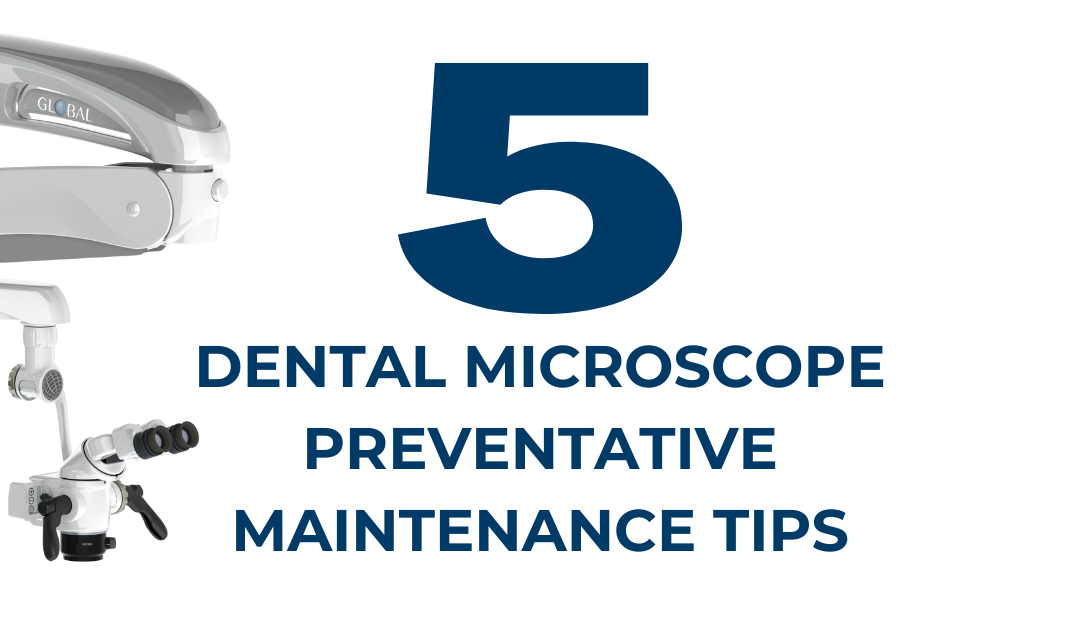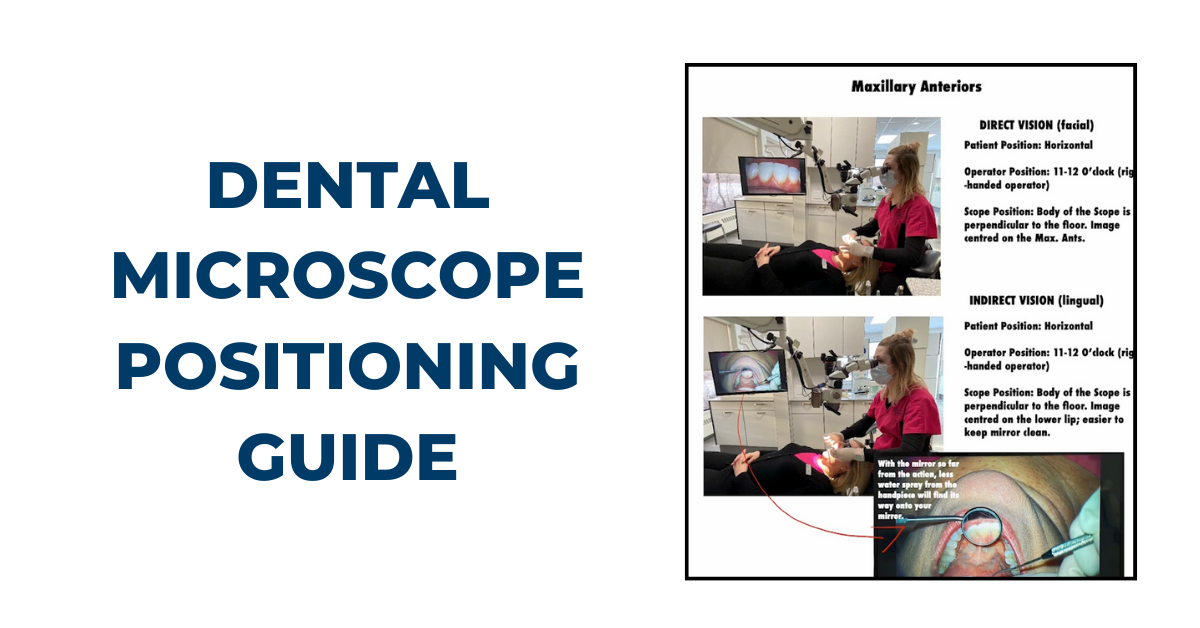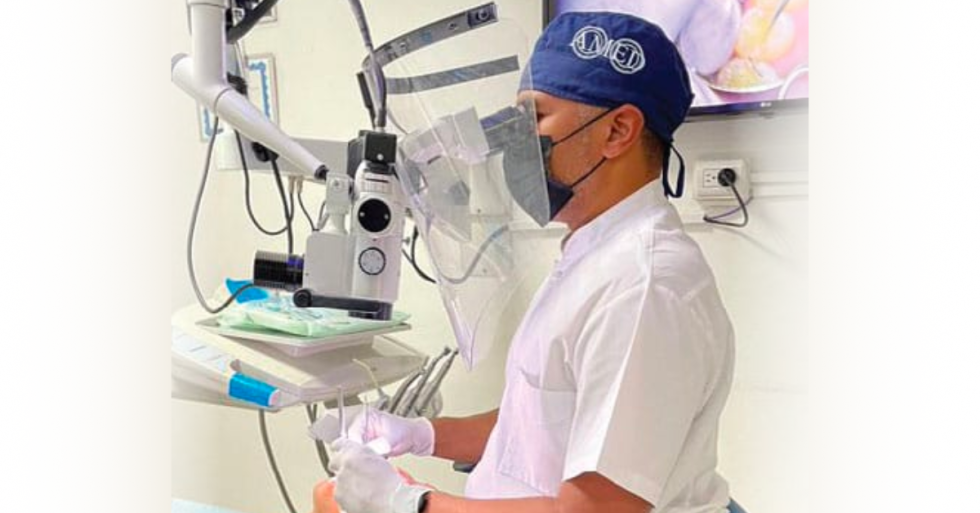5 Dental Microscope Preventative Maintenance Tips

Dental professionals are consistently investing in technologies that positively impact their ability to effectively care for their patients. From imaging systems to surgical microscopes, these new tools are often significant investments for a practice and are counted on to provide years of dependable service. Proper maintenance is a critical component to ensuring that any technology provides a solid return on investment and maximizes its value.
For over 25 years, we’ve built our surgical microscopes on the principles of dependability and value. With unique features like a limited lifetime warranty* and a modular design that allows any microscope model to be upgraded with new features, we’ve done our best to design products that provide value now and far into the future. .
In addition to these commitments, we also provide our customers with an Owner’s Manual that includes a host of tips and best practices for preventative maintenance. These guidelines are specifically written to serve as a game plan for maximizing the value of your Global microscope.
Today, we’re going to review the top ways you can protect your microscope investment through preventative maintenance.
*Limited Lifetime Warranty available in US & Canada. For more information on warranties, check out our article: Comparing Dental Microscope Warranties.
Tip #1: Periodic Inspection
One of the best ways to care for your dental microscope is a periodic inspection of the device itself. Take a close look at all of the microscope’s components and note any issues. If you see any part of the microscope that isn’t functioning correctly, contact our team as soon as possible to schedule service. While durability is a hallmark of our microscopes, we also pride ourselves on our service. Early identification of any issues and getting a quick resolution are key to extending the life and value of your scope.
Not only should you inspect your device, it is a good idea to keep a record of all of your inspections. A routine maintenance checklist can be a good reminder to perform periodic inspections.
Tip #2: Installation & Service with a Certified Technician
Much like a trained HVAC technician or auto mechanic, we recommend always using a certified professional for proper installation as well as any service, upgrade or maintenance performed on your microscope.
Certified technicians are specifically trained to install your microscope based on our Installation Manual, as well as to troubleshoot any technical issues. Properly trained service teams have access to specialized calibration tools, extensive knowledge base documents and many other resources that are unique to dental microscopes. Additionally, experienced technicians are more likely to identify potential issues and ensure your scope is operating at peak performance. An ounce of prevention is worth a pound of cure!
Tip # 3: Use Barrier Bags & Sanitize Objective Lenses
We recommend the use of a protective barrier bag on the microscope to prevent cross contamination. Not only can barrier protection of surfaces and equipment prevent contamination of clinical contact surfaces, but is particularly effective for microscope components that aren’t as easy to clean.
Upon routine removal and replacement of your barrier bag, take the time to examine the surface of your microscope for contamination. Your microscope only needs to be cleaned and disinfected if contamination is evident.
The barrier bag will not cover the microscope’s objective lenses and other optical surfaces, so these will need proper sanitation in between each patient exam. All exposed optical surfaces can be cleaned and disinfected using a clean microfiber cloth or lens tissue lightly moistened with 70% isopropyl alcohol. Refer to your Owner’s Manual, Section 6.3 for a full list of precautions to take when cleaning the objective lenses of your microscope.
For more tips on cleaning your microscope and components, check out our article: Dental Microscope Cleaning & Disinfection Tips.
Tip #4: End of Day Routine
After each work day that you or your staff have used your scope, we recommend a few steps to help properly “close down” for each day, both to extend the life of your scope and ensure you’re prepared to see patients the next day.
First, be sure to cover your lens ports at the end of each day. A lens protector prevents damage as well as contamination of the optical surface of the microscope’s objective lens. Even the tiniest dust particles can impact your visibility, so be sure to cover everything after use.
We recommend maintaining spare lens covers and eyecups to keep in your inventory to replace as needed. Also, check and maintain a stock of barrier bags to ensure you’re prepared for the days and weeks ahead.
Finally, it is a good practice to make sure that all lamps are turned off at the end of each day and the microscope is completely unplugged from the outlet. While unlikely, a power surge can be a very unfortunate surprise for your next day of work, so a routine “shut down” will help prevent any issues. Plus, while the LED bulbs are manufactured to last up to 50,000 service hours, it’s still a good idea to turn them off when not in use to ensure you can maximize their lifespan.
Tip #5: Proper Training with Staff & Assistants
Many of the doctors we speak with mention their staff as well as surgical assistants handle their scopes just like other equipment in their office. If your staff and assistants will be prepping, cleaning or handling the scope, or even present in the office or exam room where the scope is installed, it’s important they are properly trained on how to handle the scope and its components.
Share this article with any staff members who will be handling the scopes, as this will help make everyone aware and familiar with how to inspect and disinfect the device after use. If everyone in your office is able to implement these preventative maintenance best practices, it will help maximize the value of the scope for many years to come
More Value With a Global Microscope
At Global Surgical, we’re committed to providing value by including the industry’s only limited lifetime warranty as well as manufacturing modular components for future upgrade, all to extend the life of your scope.
Many of the doctors we speak with quickly begin using their scopes with nearly every patient – from observation and diagnosis to treatment and procedure, so we know it’s important they are able to be operational every single day for years to come. But don’t just take our word for it, hear from doctors who have used Global microscopes in their practices:
- “All of my hygienists and my associate use the microscope for all procedures as well. My hygienists are more efficient with the microscope than they ever were with loupes.” – Dr. Wayne Remington, DDS
- “Microscopy is an integral part, not only of how we diagnose and treat our patients, but key to how Team Atlanta teaches – enlarged images and close-up video for effective communication.” – Team Atlanta: Dr. Ronald Goldstein, Dr. Maurice Salama, Dr, David Garber, Dr. Henry Salama
- “I have been using Global Microscopes for over 8 years now. It is the foundation of my practice as well as the reason for my comfort and efficiency while providing treatment and care for my patients.” – Dr. Stacey Ochoa, DDS
Need Support? Reach Out!
If you’re already using a Global microscope and need support of any kind, please reach out! The Global support team is standing by to help you, to ensure you’re up and running as quickly as possible.
If you’re considering adding a scope to your practice, know your investment is a good one, protected for the long-term with quality manufacturing, warranty and these preventative measures.
We’re proud to be based in the US, with manufacturing and assembly facilities in St. Louis, MO. This helps us give our customers the best service, domestically and internationally. And, as part of our commitment to our customers, we offer a limited lifetime warranty on our scopes (US & Canada customers only).
Please feel free to reach out at 800-861-3585 or by clicking the button below.



